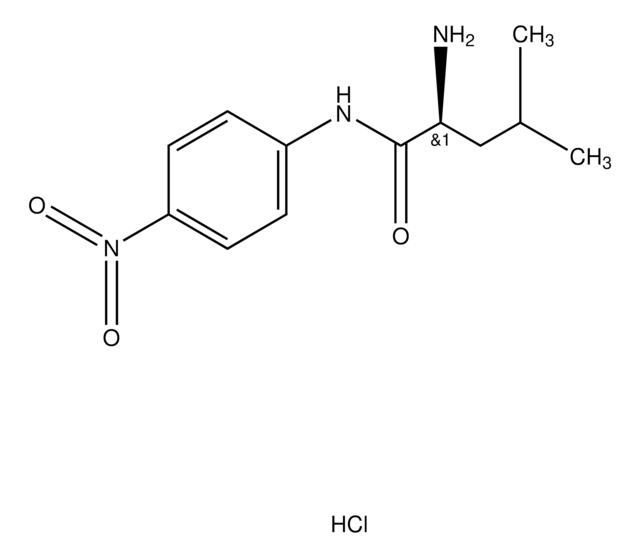A3913
L-Argininamide dihydrochloride
≥98%, suitable for ligand binding assays
About This Item
Recommended Products
product name
L-Argininamide dihydrochloride,
assay
≥98%
Quality Level
form
powder
technique(s)
ligand binding assay: suitable
color
white to off-white
storage temp.
−20°C
SMILES string
Cl.N[C@@H](CCCNC(N)=N)C(N)=O
InChI
1S/C6H15N5O.ClH/c7-4(5(8)12)2-1-3-11-6(9)10;/h4H,1-3,7H2,(H2,8,12)(H4,9,10,11);1H/t4-;/m0./s1
InChI key
BPQLYFCEVVKLLX-WCCKRBBISA-N
Application
Biochem/physiol Actions
signalword
Danger
hcodes
Hazard Classifications
Acute Tox. 4 Oral - STOT SE 1
target_organs
Eyes
Storage Class
6.1C - Combustible acute toxic Cat.3 / toxic compounds or compounds which causing chronic effects
wgk_germany
WGK 2
flash_point_f
Not applicable
flash_point_c
Not applicable
ppe
Eyeshields, Faceshields, Gloves, type P2 (EN 143) respirator cartridges
Certificates of Analysis (COA)
Search for Certificates of Analysis (COA) by entering the products Lot/Batch Number. Lot and Batch Numbers can be found on a product’s label following the words ‘Lot’ or ‘Batch’.
Already Own This Product?
Find documentation for the products that you have recently purchased in the Document Library.
Our team of scientists has experience in all areas of research including Life Science, Material Science, Chemical Synthesis, Chromatography, Analytical and many others.
Contact Technical Service

